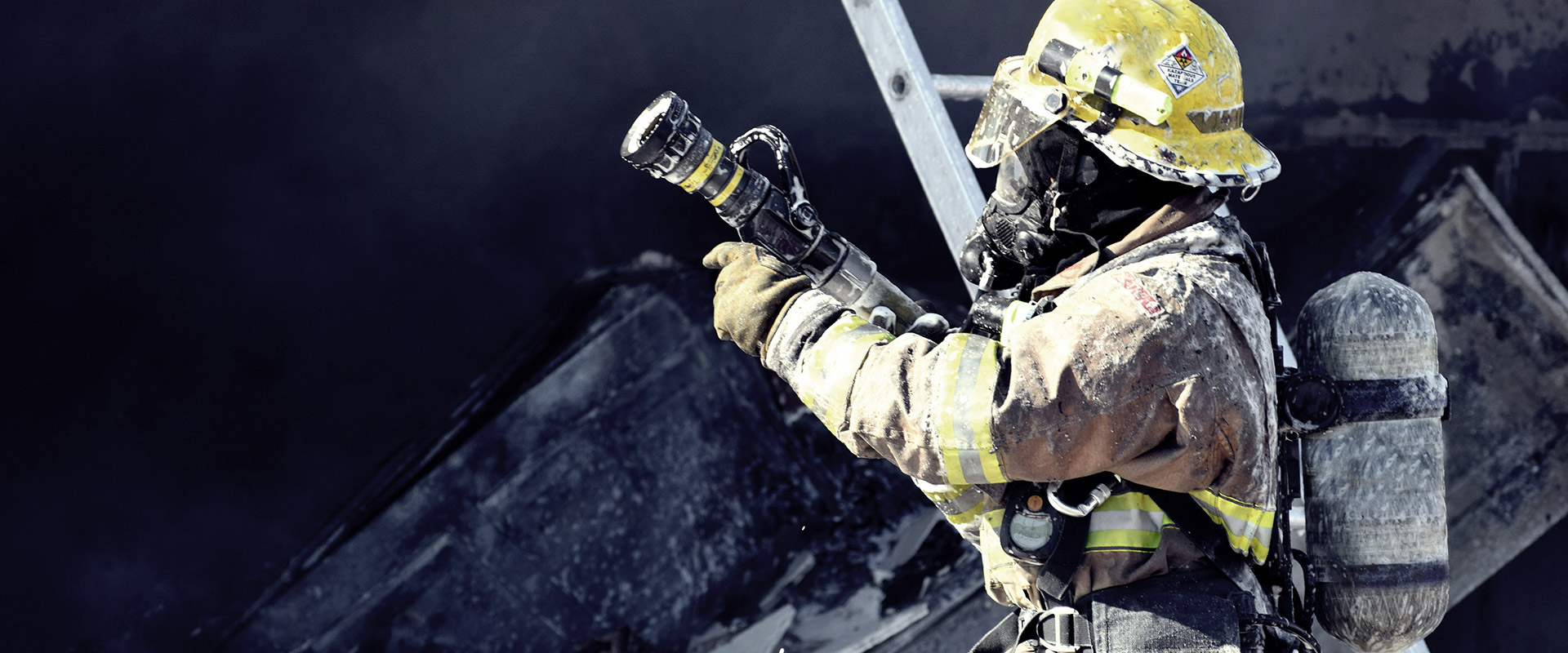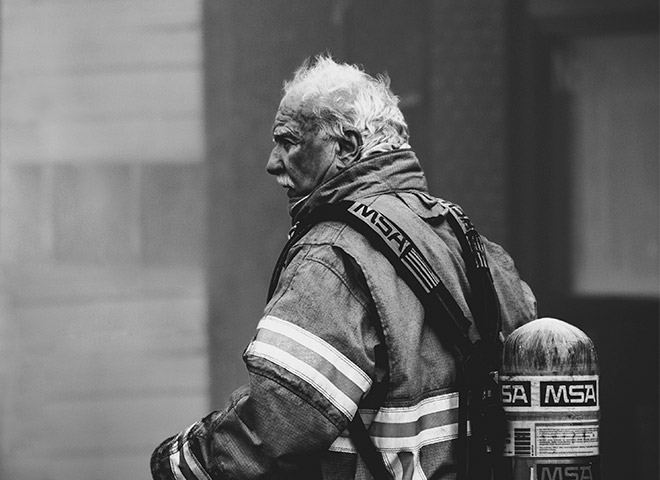Clean Equipment Help Save Lives
In order to minimize the risk for firefighters of being diagnosed with cancer we need to minimize their exposure to cancer causing toxic chemicals such as PAH particles. One way of doing that is trough thorough cleaning and decontamination of the PPE equipment. There are a few things to always bare in mind while doing so.
- Always wash and decontaminate your PPE equipment after every operation or exercise.
- Always make sure to use appropriate protective gear to minimize dermal and respiratory exposure wile handling contaminated gear.
- Always make sure Not to handle and store clean and contaminated gear in the same space within the station. This is to avoid re-contamination hence putting yourself and/or fellow firefighters at risk.

Divide the space you have into contaminated zones and clean zones
Contaminated Zone & Clean Zone
Studies show that carcinogenic particles can be found in most areas within a fire station. To avoid this, it is important to handle contaminated gear in a safe and regulated manner to minimize the spreading of these particles. One way of doing that is to divide the space you have into contaminated zones and clean zones and set up rules for all employees to follow. The contaminated zone is where you collect contaminated gear after an operation or exercise. The clean zone is where you handle and store the decontaminated equipment. The zones should be separated with doors and if possible, use separate ventilation systems to prevent airborne particles from traveling to clean zones. Try to minimize areas and surfaces within the station where contaminated gear is being handled to minimize the spreading of the toxic chemicals throughout the premises.
The area where you perform the cleaning process is in a way a grey area in between the two. In this area we recommend you dived it into contaminated and clean spaces. If you for some reason need to put down a contaminated SCBA in that area, before putting it inside the Solo Rescue Decon Washer, always make sure you use the same work bench for that. If you need to put it down after it has been decontaminated, always use a separate work bench. If possible, separate the two with some space between them.
Another thing to avoid is to place the zones in a way that forces you to carry contaminated equipment through clean zones, or the other way around. To do that, always try to place the contaminated zone along an outside wall of the station with a separate entrance from the outside.
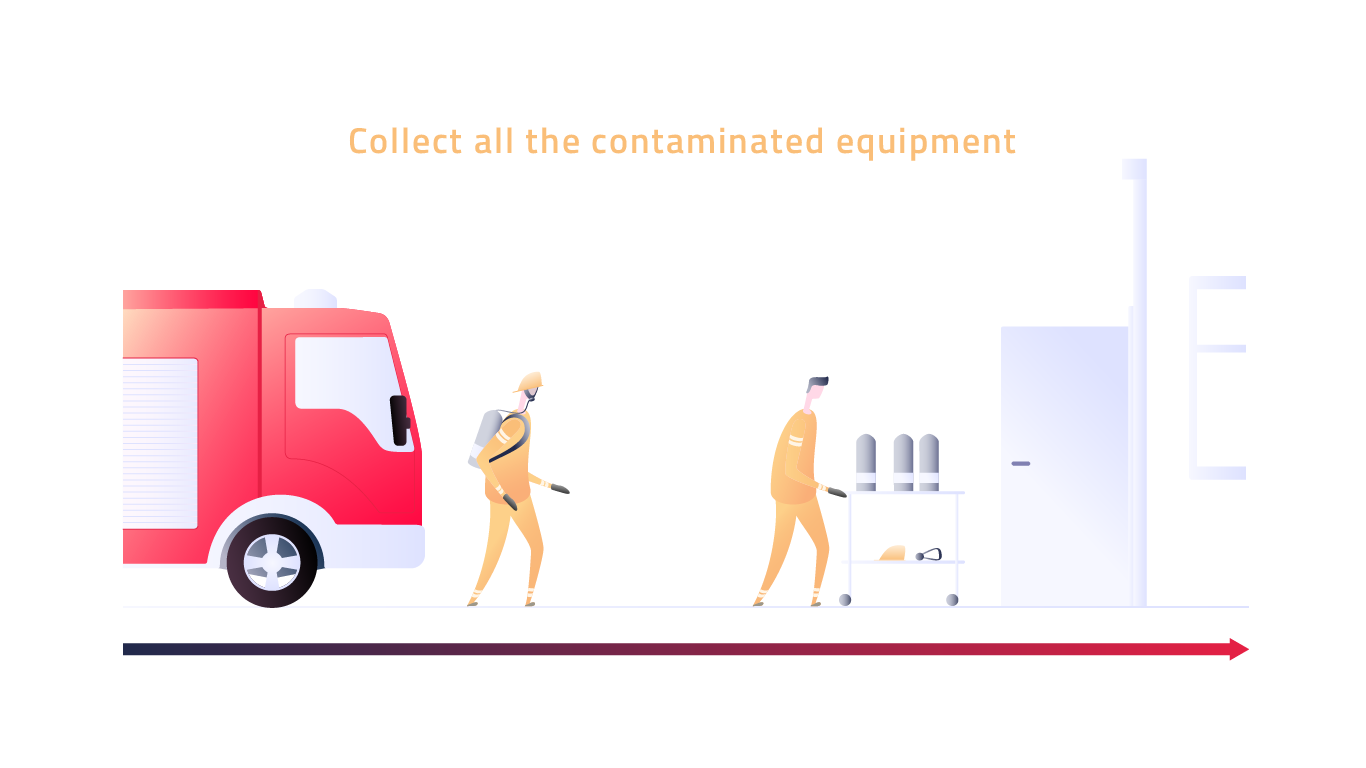
Always collect all the contaminated equipment at the same given place.
Collecting contaminated equipment (contaminated zone)
After a fire rescue operation or exercise is done you need to take care of your equipment in a safe manner. The first thing you need to do is to take it all off in a way that minimizes exposure to toxins. Have a colleague hose you down with water before taking of your protective gear. Have a colleague help you take your gloves of. If possible, use disposable gloves before handling any of you other PPE equipment in order to prevent dermal exposure on your hands. Put all fabrics in a plastic bag to help minimize contamination of the fire engine and the station upon arrival.
Upon arrival to the station, collect all the contaminated gear at a certain given place, contaminated zone, and make sure not to mix it with clean gear to avoid recontamination.
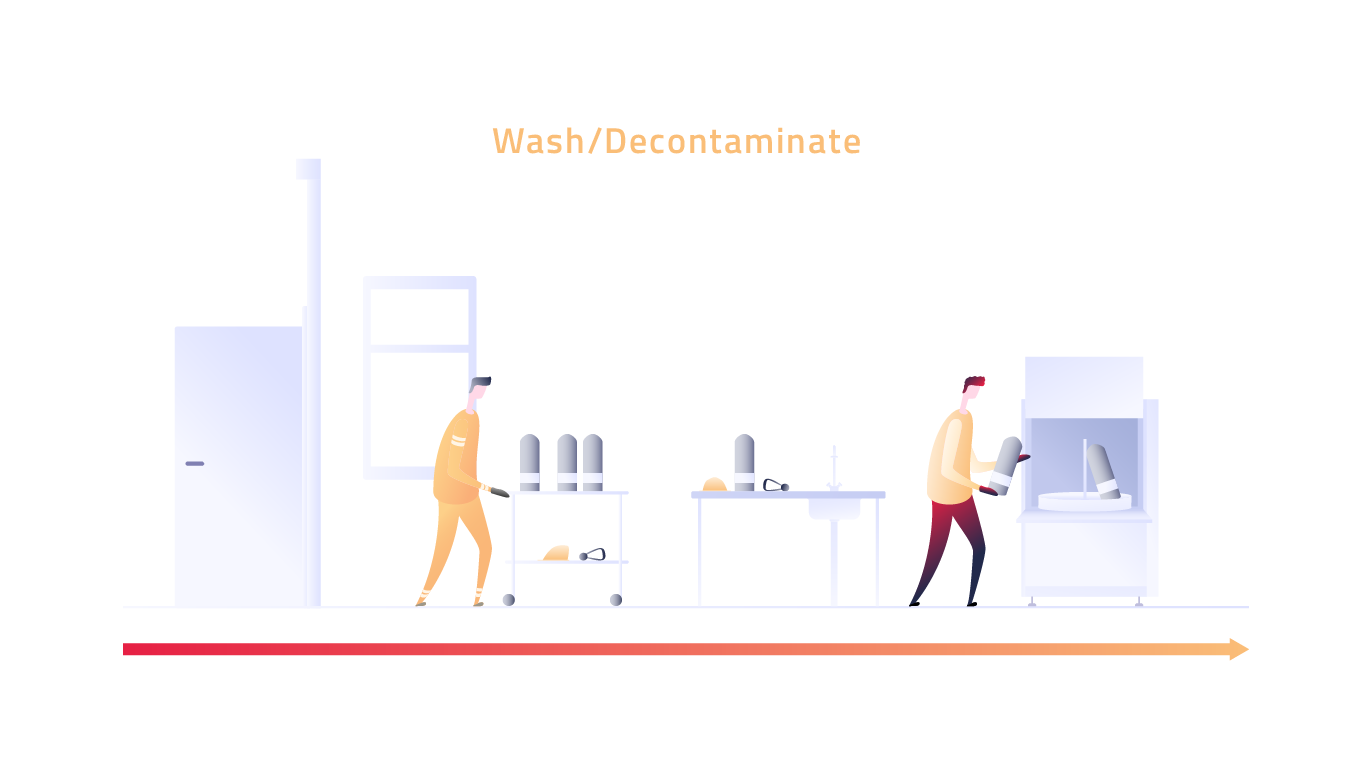
Remember to divide the cleaning/washing area into contaminated and clean spaces.
Cleaning Process (contaminated & clean space)
Turnout Gear
Wash your turnout gear in a washing machine or extractor made, and used, for that sole purpose. Make sure to follow the manufacturers washing instructions.
SCBA, Masks, Helmets, Boots & Gloves
The best and safest way of cleaning contaminated SCBAs, masks, helmets, boots and gloves is to use a method that minimizes respiratory and dermal exposure to the hazardous chemicals and carcinogens stuck on the contaminated PPE equipment. One way of doing that is to use a decon washer like the Solo Rescue where the entire cleaning process is carried out inside the machine, ensuring minimal exposure. The Solo Rescue has a lower fold-out door that makes loading the machine ergonomic and easy, a process that also helps minimize the manual contact with contaminated materials.
If cleaning the equipment in a decon washer is not an option, cleaning by hand will have to do. However, cleaning the equipment by hand poses a health risk due to unprotected exposure to the carcinogens and is not something we recommend. It can also be both time consuming and hard work. If your station does not have a decon washer we strongly recommend you investigate investing in one.
Always make sure to follow your manufacturers washing instructions.
Regardless of how the cleaning procedure is carried out it is important that it is done outside of the contaminated zone where you store or handle the contaminated gear.
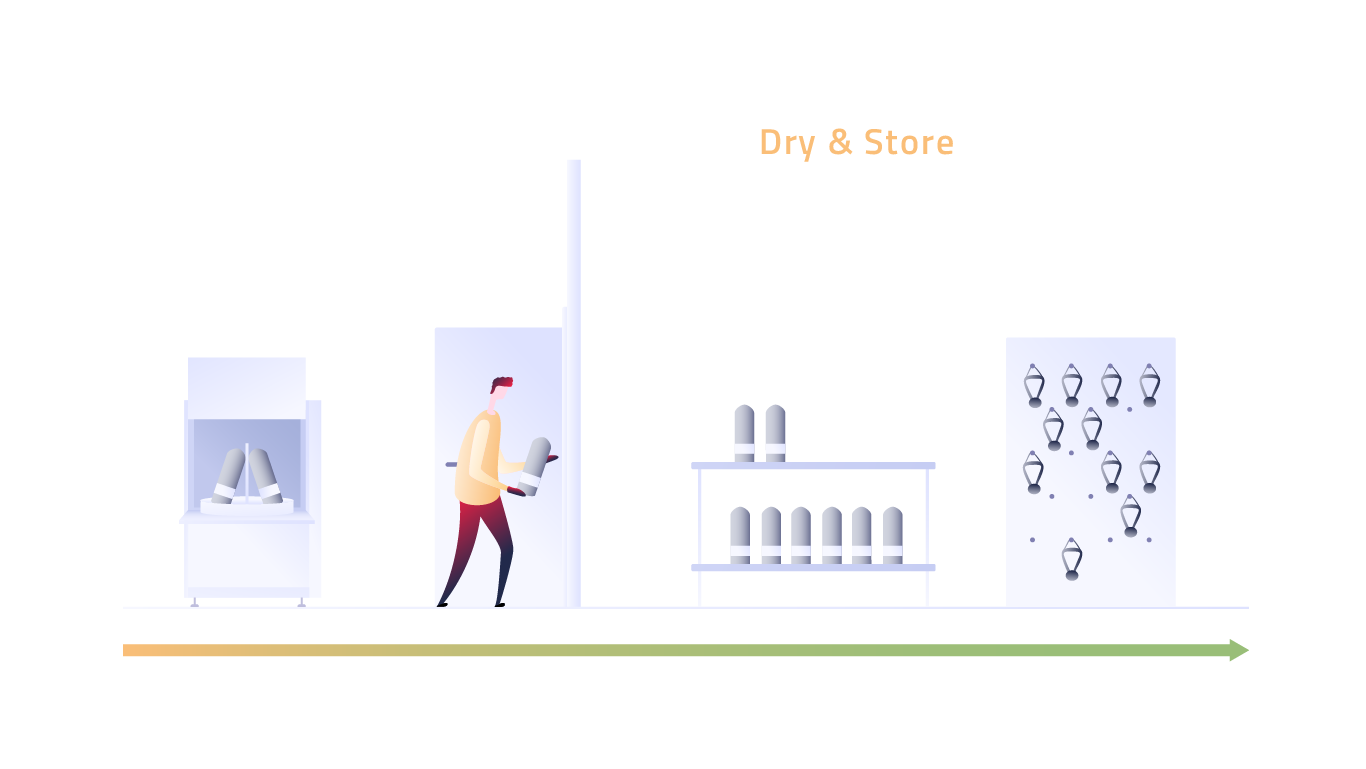
Place the clean gear and equipment in a separate space dedicated for drying.
Drying (Clean Zone)
Place the clean gear and equipment in a separate space dedicated for drying. If possible, use a dehumidifier to speed up the process. Make sure not to store or handle any contaminated equipment in this space.
Storage (Clean Zone)
Once your equipment is clean and dry it is ready to be used again. Make sure you store it in a clean zone free from other contaminated equipment until it is time to use it again.





